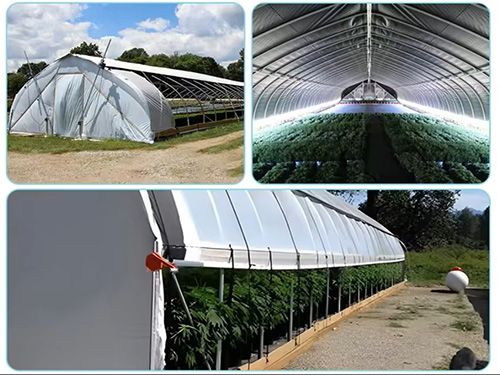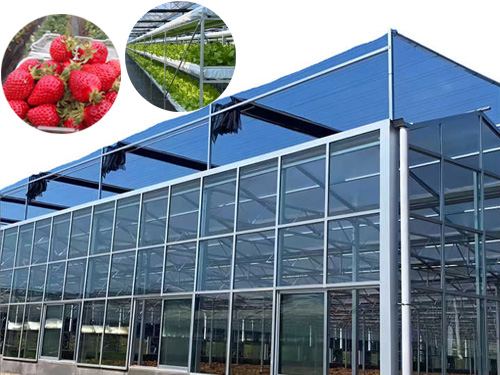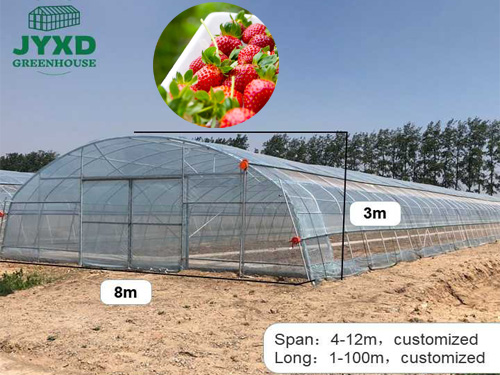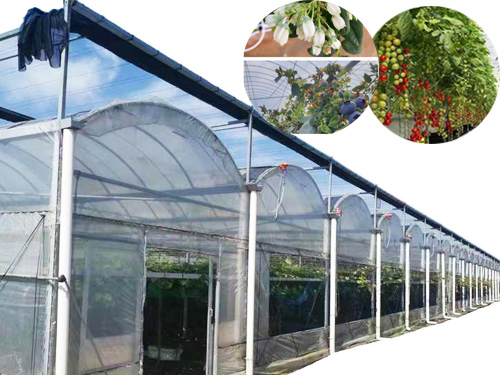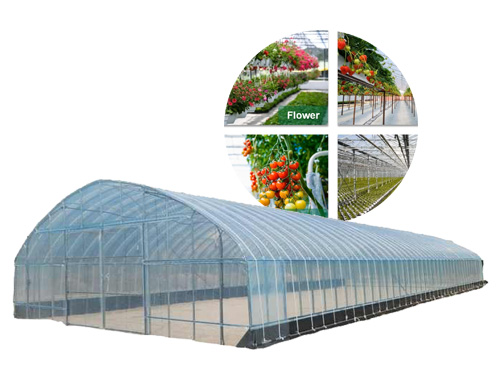NEWS DETAILS
NEWS INFORMATION
Low-Altitude Greenhouses: Improving Air Quality and Temperature Control
AUTHOR:jyxd-greenhouse DATE:2025-03-22 10:59:48 HITS:125
Greenhouses play a vital role in modern agriculture, providing a controlled environment for growing crops throughout the year. However, the challenges faced by greenhouse growers can vary depending on the altitude and environmental conditions of the location. In low-altitude areas, managing air quality and temperature control are key factors in creating an optimal environment for plant growth. This article explores how low-altitude greenhouses can benefit from advanced air quality management systems and effective temperature control strategies to enhance crop yield and ensure sustainability.
Understanding Low-Altitude Greenhouses
Low-altitude greenhouses are typically located in regions that are closer to sea level, where the climate is often warmer and more humid compared to higher altitudes. These conditions can present specific challenges, such as the risk of overheating and poor air circulation, which can affect both plant health and overall energy efficiency. However, with the right strategies and technologies, these challenges can be effectively addressed to improve the growing conditions inside the greenhouse.
1. Improving Air Quality in Low-Altitude Greenhouses
Maintaining good air quality is crucial for plant growth and for ensuring the health of both plants and workers inside the greenhouse. Poor air quality can lead to the accumulation of harmful gases, such as carbon dioxide (CO2) and ethylene, which can stunt plant growth and reduce crop yield. Additionally, insufficient ventilation can increase humidity levels, leading to mold and fungal growth.
Ventilation Systems
One of the most effective ways to improve air quality is through proper ventilation. A well-designed ventilation system helps regulate airflow, removing excess humidity and preventing the buildup of harmful gases. In low-altitude greenhouses, natural ventilation can be a useful solution, utilizing windows and vents to allow air to circulate freely. However, in larger greenhouses or areas with higher humidity levels, mechanical ventilation systems may be necessary. These systems can include exhaust fans, inlet fans, and circulation fans to ensure proper air movement.
Air Filtration and Dehumidification
In addition to ventilation, air filtration systems can be installed to remove contaminants from the air. High-efficiency particulate air (HEPA) filters can help trap dust, pollen, and other particles that may be harmful to both plants and workers. Dehumidifiers can also be used to reduce excessive moisture in the air, which is especially important in low-altitude regions where humidity levels are naturally higher. This helps prevent mold and mildew growth, which can negatively impact crop health.
Carbon Dioxide Enrichment
In some low-altitude greenhouses, especially those with tightly controlled environments, enriching the air with carbon dioxide (CO2) can enhance plant photosynthesis, leading to faster growth and higher yields. CO2 enrichment systems can be installed to release controlled amounts of CO2 into the greenhouse, ensuring that plants receive optimal levels for maximum productivity.
2. Temperature Control Strategies for Low-Altitude Greenhouses
Temperature control is another critical factor in ensuring the success of greenhouse farming, particularly in low-altitude regions where the outside climate can be warm or fluctuate significantly. Excessive heat can lead to stress in plants, while temperatures that are too low can stunt growth and reduce yields. Therefore, maintaining a stable and consistent temperature inside the greenhouse is essential.
Shading Systems
During hot weather, shading systems can help prevent the greenhouse from overheating by reducing the amount of direct sunlight that enters the structure. Shade nets, thermal screens, or reflective materials can be used to diffuse sunlight and create a cooler environment. These systems not only protect plants from excessive heat but also reduce the need for artificial cooling, thus lowering energy consumption.
Cooling Systems
In cases where shading alone is not sufficient to regulate temperature, cooling systems can be employed. Evaporative cooling systems, such as wet wall cooling or fogging systems, can be effective in lowering temperatures by using water evaporation to absorb heat. These cooling systems work by drawing hot air through wet surfaces, where the evaporation process cools the air before it enters the greenhouse. This method is highly energy-efficient and suitable for maintaining a comfortable temperature during the hottest days of the year.
Heaters for Cold Weather
In contrast, during cooler seasons or at night, greenhouses in low-altitude areas may require additional heating to maintain an optimal temperature for plant growth. Radiant heating systems, such as underfloor heating or overhead pipes, can provide consistent warmth without wasting energy. Geothermal heating systems can also be an energy-efficient solution for providing heat during colder months by tapping into the earth’s natural warmth.
Thermal Mass
Using thermal mass materials inside the greenhouse can help stabilize temperature fluctuations. Materials such as concrete, brick, or water containers can absorb heat during the day and release it at night, preventing excessive temperature swings. This method of passive temperature control is especially useful in low-altitude greenhouses where daily temperature fluctuations may be more pronounced.
3. Sustainable Practices for Low-Altitude Greenhouses
Sustainability is an important consideration for greenhouse operators looking to reduce their environmental impact. Implementing energy-efficient systems and sustainable practices can help minimize energy consumption while maintaining optimal conditions for plant growth.
Solar Power
Utilizing renewable energy sources, such as solar power, can significantly reduce the energy consumption of low-altitude greenhouses. Installing solar panels on the roof of the greenhouse can provide electricity for ventilation fans, cooling systems, and lighting. By harnessing the power of the sun, greenhouse operators can lower their carbon footprint and reduce dependence on external energy sources.
Rainwater Harvesting
In regions where water is scarce or expensive, rainwater harvesting systems can be an excellent way to collect and store water for irrigation purposes. By capturing rainwater from the greenhouse roof, growers can reduce their reliance on municipal water supplies and cut down on water-related energy costs. This practice helps conserve water resources and improves sustainability.
4. Conclusion
Low-altitude greenhouses present unique challenges when it comes to air quality and temperature control, but with the right strategies and technologies, these challenges can be effectively managed. By investing in advanced ventilation systems, temperature control solutions, and sustainable practices, greenhouse operators can create an optimal growing environment for plants while reducing energy consumption and environmental impact.
Effective air quality management and temperature control not only enhance plant health and productivity but also contribute to a more sustainable and cost-effective greenhouse operation. As the demand for high-quality, locally grown produce continues to rise, low-altitude greenhouses equipped with these energy-efficient solutions will play a crucial role in the future of agriculture.
Hebei Juyou Xinda Greenhouse Facilities Co.,Ltd.
Copyright © 2024-2025 https://www.jyxd-greenhouse.com. All Rights Reserved Hebei Juyou Xinda Greenhouse Facilities Co.,Ltd.Copyright





 Current Location:
Current Location:


